I’ve said it before: the solar-powered Seiko Prospex Speedtimer line has no business being this good for the money. When it first dropped back in 2021, the 39mm chronographs felt like the brand’s way of quietly saying, “Yeah, we still know how to make a fun, accessible sports watch.” They had sapphire, solid water resistance, real wrist presence and somehow stayed under a grand.
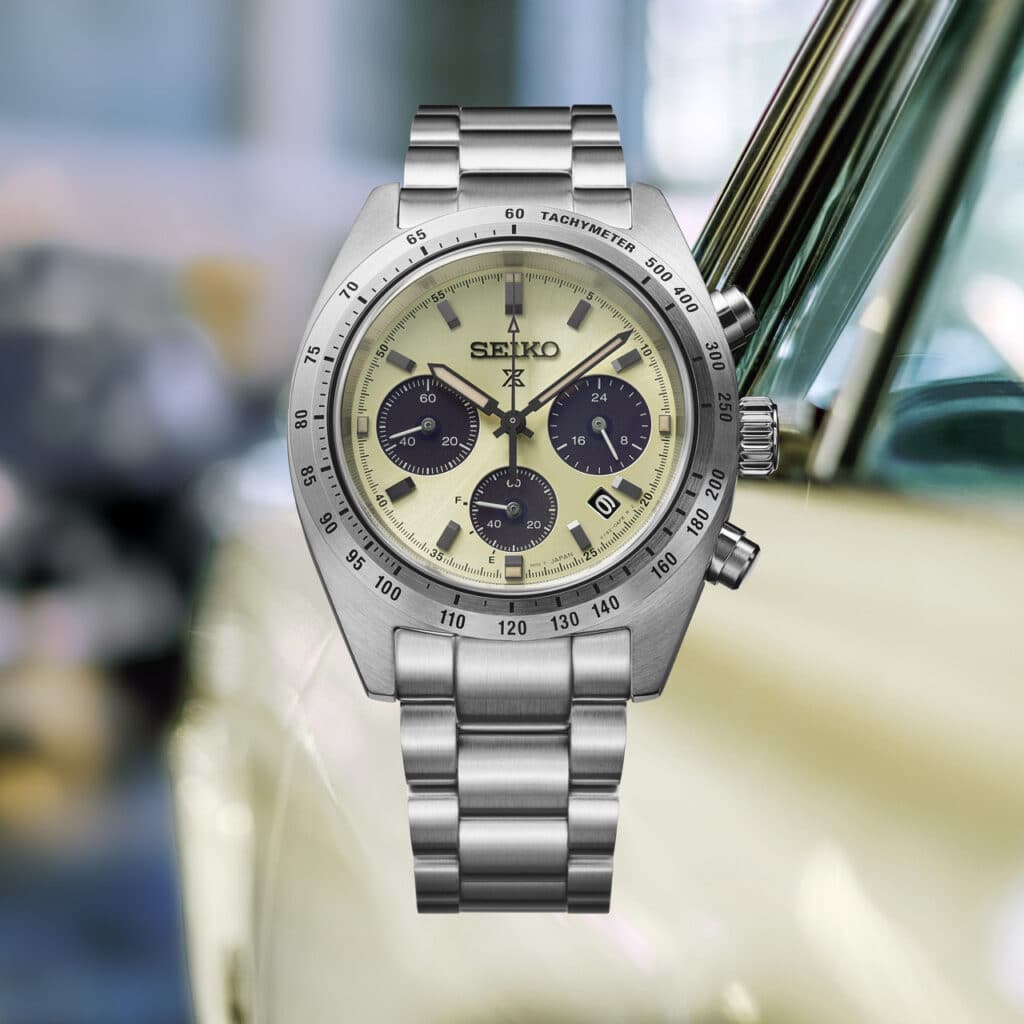
Then came the SSC813, affectionately (and maybe a little mischievously) dubbed the “Seitona.” The name stuck. Black bezel, white dial, sub-registers like reverse panda eyes—Seiko knew what kind of attention that combination would grab. And now, they’ve done it again. Only this time, they’ve decided to turn the clock back a few decades.
The new Seiko Prospex Speedtimer “Motoring” (ref. SSC959P1) is basically Seiko’s nod to the early days of the Daytona era—back when bezels were still steel, dials had a little warmth to them, and nobody thought to price a chronograph like a down payment on a car. The brand says it’s inspired by “European classic cars.”
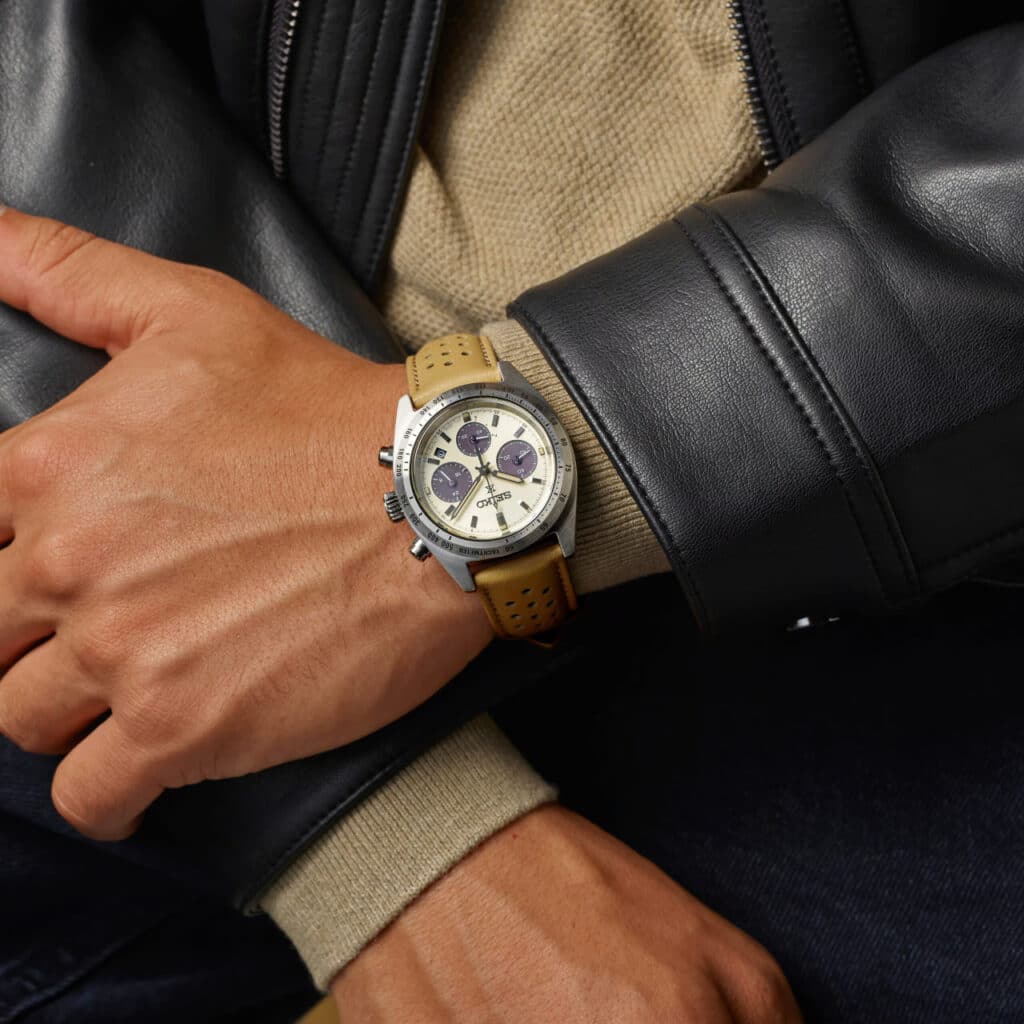
The creamy, slightly aged tone of the dial immediately separates it from the bright, modern white of the SSC813. It feels lived-in, a little nostalgic—the kind of detail collectors notice because it hits that sweet spot between tasteful vintage styling and intentional restraint. The subdials stay black, but Seiko swapped in a matching black date wheel, a small change that makes the layout feel more cohesive and balanced.
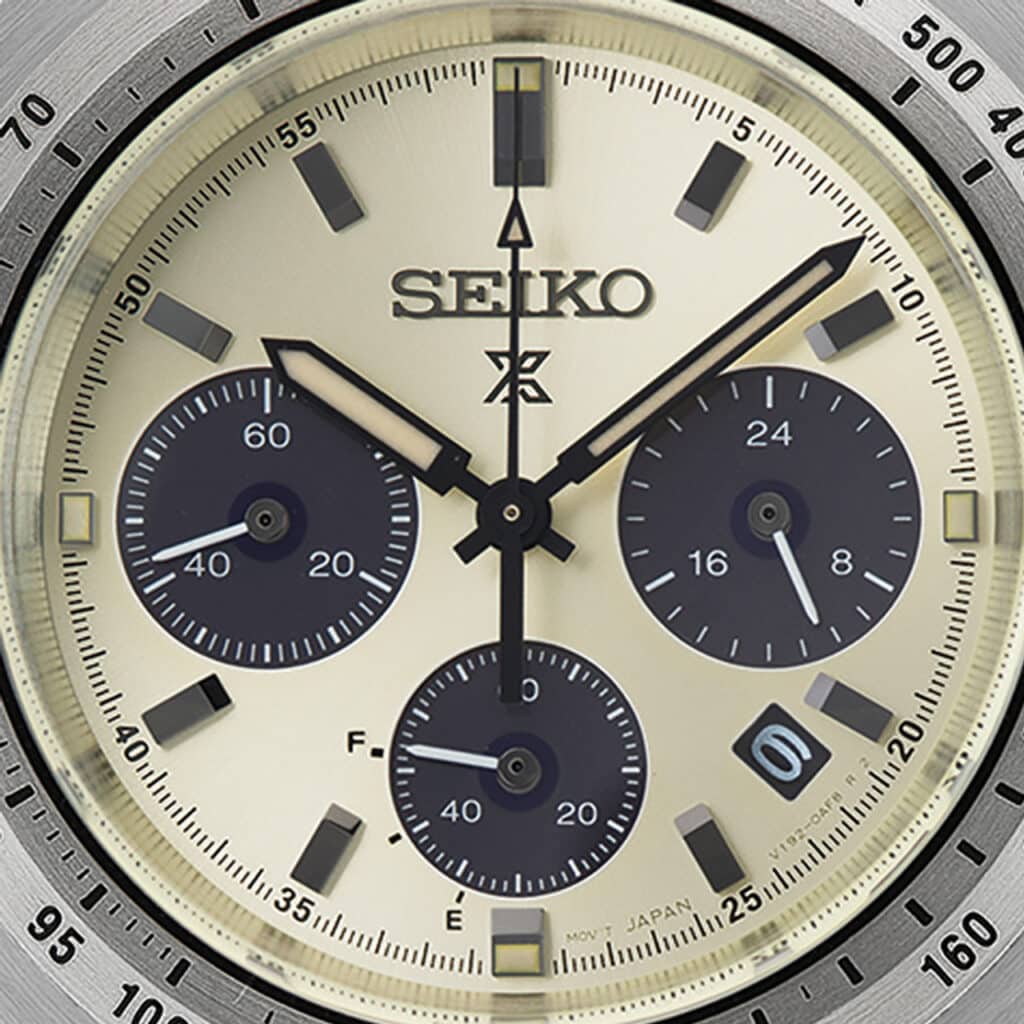
The biggest visual shift, of course, is the bezel. Gone is the glossy black tachy insert—in its place, brushed stainless steel with engraved markings. The effect is strikingly familiar if you’ve ever stared at old auction photos of 1960s Daytonas. Whether that’s a wink or a coincidence, Seiko’s not saying, but I’d bet they’re smiling behind the curtain.
Mechanically, nothing’s changed. The “Motoring” runs on Seiko’s Cal. V192 solar quartz chronograph, a reliable, set-it-and-forget-it caliber with six months of power reserve and accuracy around ±15 seconds per month. It’s the same recipe: sapphire crystal, 100 meters of water resistance, Lumibrite on the hands and markers, and a compact 39mm stainless steel case that wears better than most of its automatic cousins.
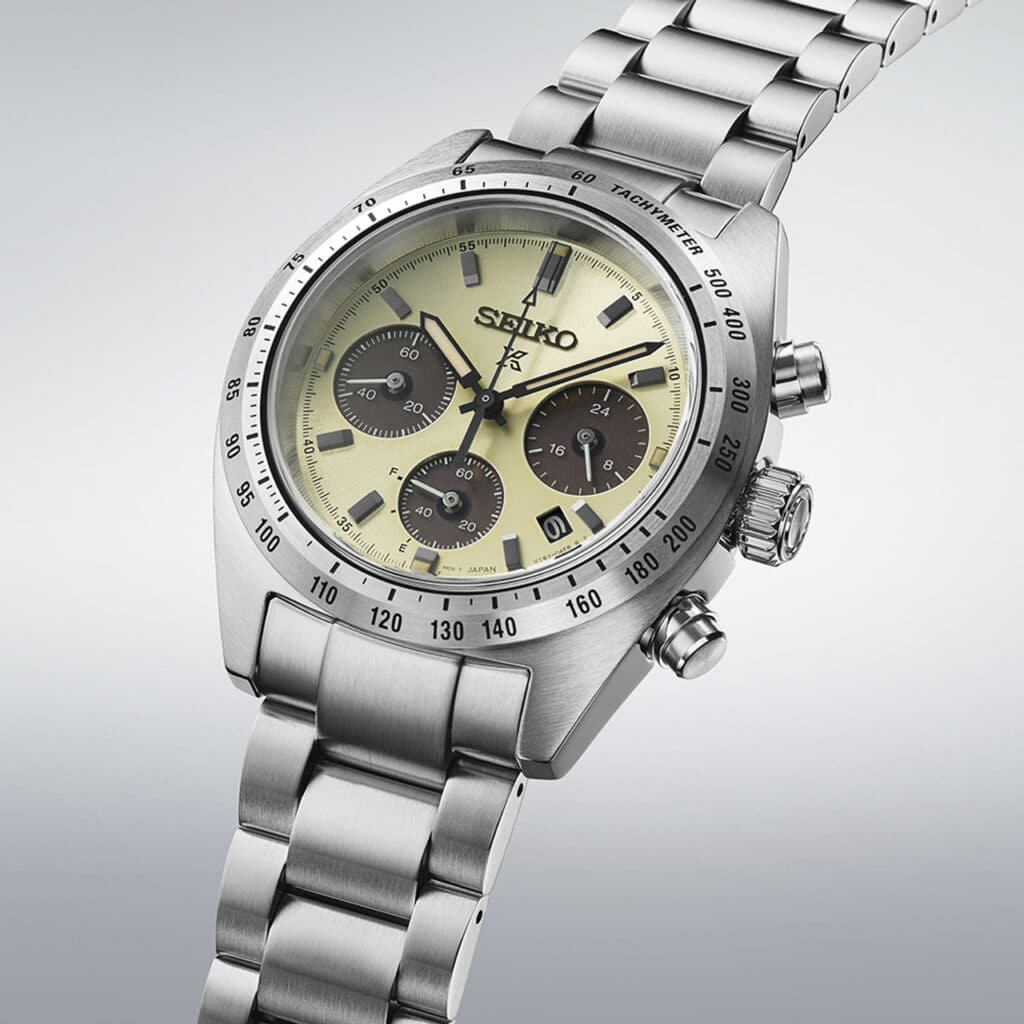
You still get the familiar Oyster-style bracelet, solid if a bit plain, but Seiko throws in a tan rally strap for this edition—a thoughtful touch that actually sells the “Motoring” theme better than the marketing copy does.
The watch is limited to 2,700 pieces and, for reasons known only to Seiko, it’s exclusive to Europe. That means anyone in the U.S. chasing one will be paying import prices—roughly $984 converted from the U.K. retail, versus the SSC813’s $725. Still technically affordable, but the gap’s widening.
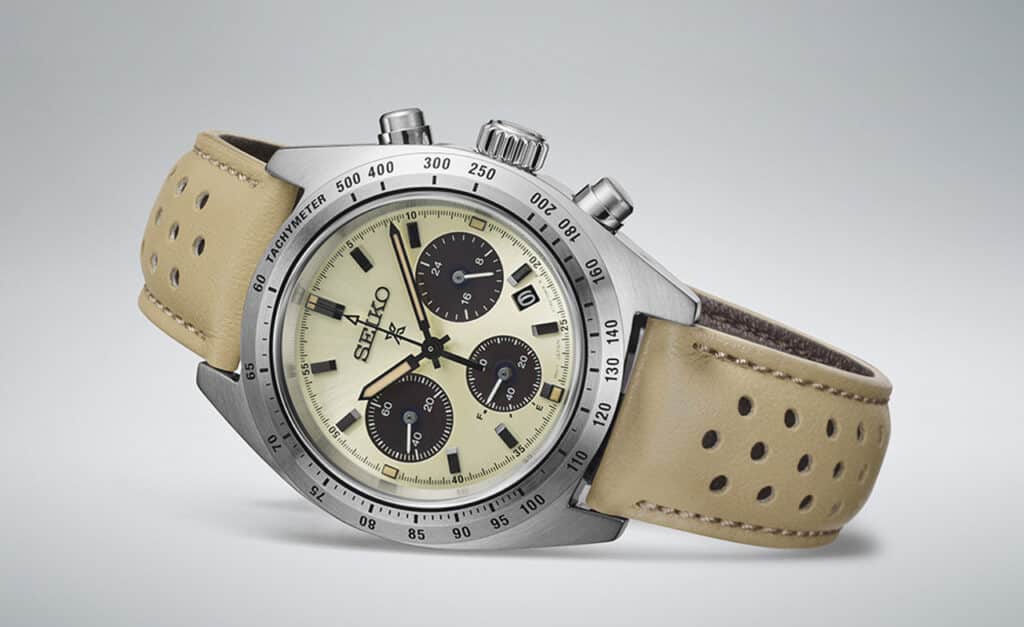
Even so, this might be the most balanced and appealing version of the Solar Speedtimer yet. It’s honest about what it is—a vintage-leaning, great-wearing chronograph with just enough flair to make you look twice. And while Seiko’s “European classic car” story feels a little thin, the execution doesn’t.
For collectors, the “Motoring” hits where nostalgia meets practicality—that sweet spot where you can still afford to scratch an itch without regretting it later. It’s just reminding us that, for under a grand, Seiko’s still running its own race.

Co-Founder & Senior Editor
Michael Peñate is an American writer, photographer, and podcaster based in Seattle, Washington. His work typically focuses on the passage of time and the tools we use to connect with that very journey. From aviation to music and travel, his interests span a multitude of disciplines that often intersect with the world of watches – and the obsessive culture behind collecting them.
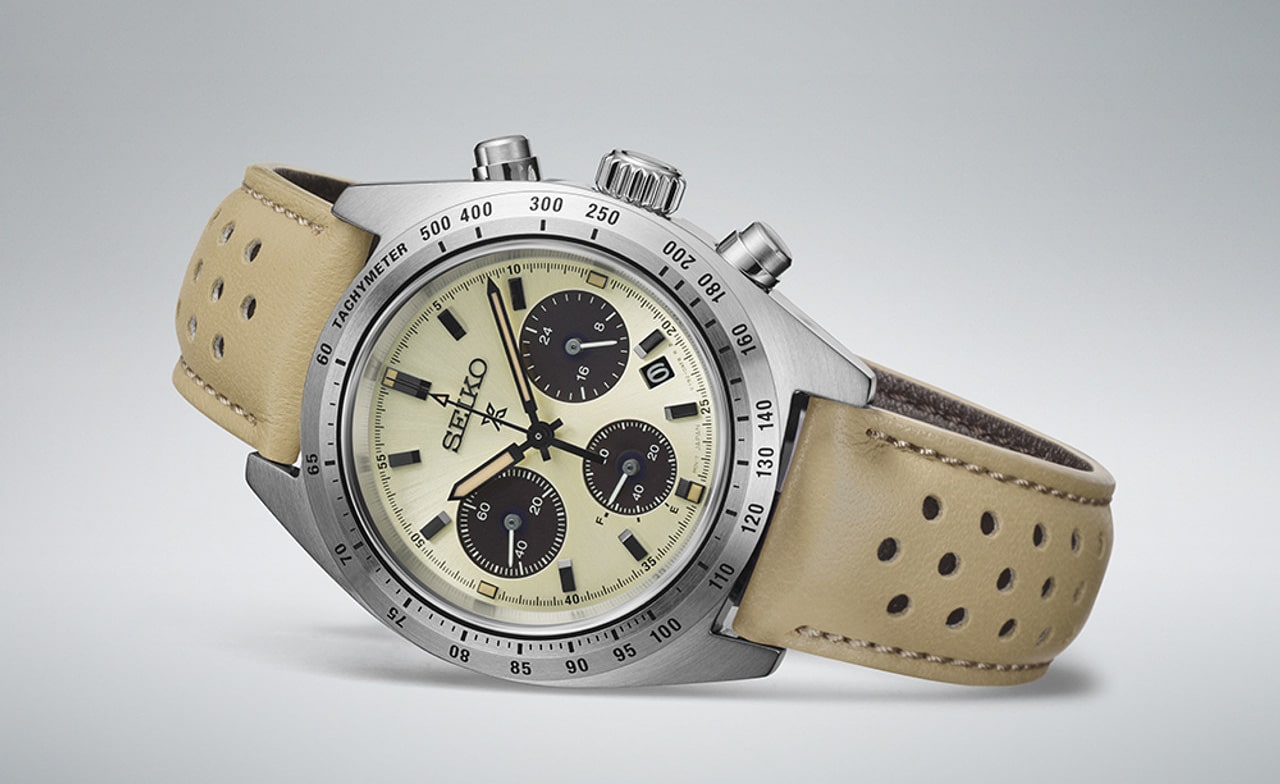
Beautiful! How do I order these from the USA?
I love it, where to purchase the tan model please?